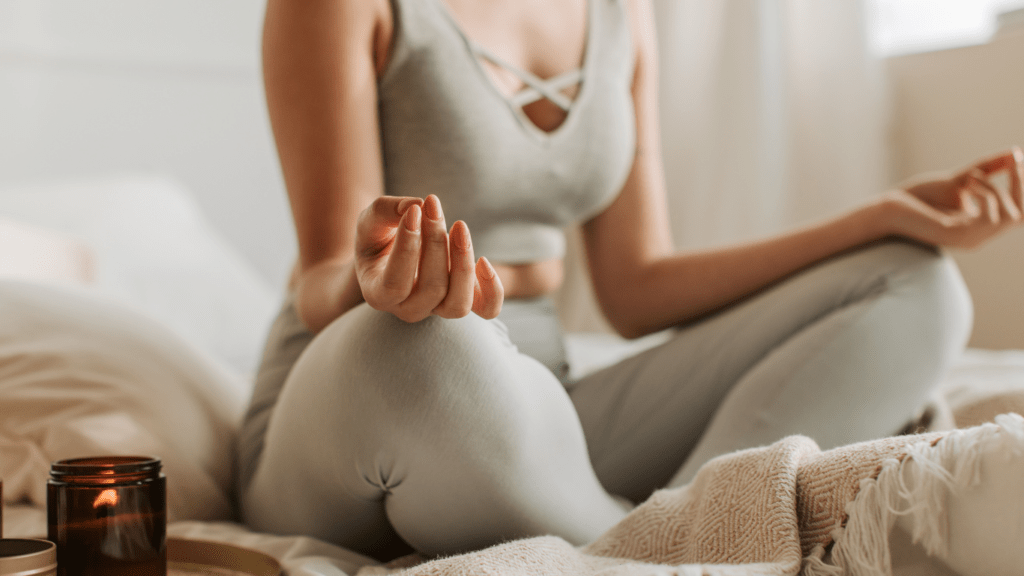Understanding Meditation
Meditation is a timeless practice aimed at cultivating clarity, mindfulness, and a deep sense of calm.
What Is Meditation?
Meditation involves focusing the mind to achieve a mentally clear and emotionally calm state. It can be as simple as sitting quietly and concentrating on the breath or repeating a mantra. This practice helps individuals focus their thoughts and eliminate the stream of jumbled information that can cause stress.
Benefits of Meditation
- Meditation offers numerous benefits.
- Studies show it reduces stress levels, which can lower the risk of related health issues.
- It improves focus, helping individuals perform better in their daily tasks.
- Regular meditation also fosters emotional health by enhancing self-awareness and promoting a positive outlook.
Preparing for Meditation
Meditation requires a bit of preparation to maximize its benefits. Here are some essential steps to get started.
Choosing a Quiet Space
Find a place free from distractions. Consider a room where you won’t be interrupted. If inside, close the door and turn off devices. Outside, a secluded spot in a garden or park works well, provided the noise level is low.
Selecting a Comfortable Position
Pick a position that suits you. Sitting works best for many, either on a chair with feet flat or on the floor with legs crossed. Ensure your back is straight to maintain alertness. Lying down is also an option, though it increases the risk of falling asleep.
Setting a Time Frame
Decide on a time frame that fits your schedule. Start with 5 to 10 minutes if you’re a beginner. Gradually increase the duration as you become more comfortable. Use a timer or an app for consistency.
Basic Meditation Techniques

Meditation offers various techniques to help achieve mindfulness and calm. Here are some popular methods to explore.
Mindfulness Meditation
Mindfulness meditation focuses on being present and aware of the moment without judgment. This technique involves observing thoughts and sensations.
For example, I start by sitting comfortably, then pay attention to my breath or bodily sensations. If my mind wanders, I gently bring my focus back. Studies from the American Psychological Association indicate that mindfulness can improve concentration and reduce stress.
Focused Meditation
Focused meditation centers on using one of the five senses to focus. This method helps train my mind on a single point, like:
- candle flame
- repetitive sound
For instance, listening to a specific piece of music works well. If distracted, I refocus on the chosen object. This practice enhances attention span and mental clarity.
Guided Meditation
Guided meditation uses external aids like audio recordings or apps to lead the meditation process. In this technique, an instructor provides verbal cues to visualize relaxing scenarios or follow breathing patterns. I often use apps like Headspace or Calm for this purpose. According to the National Center for Complementary and Integrative Health, guided meditation can effectively reduce anxiety and improve emotional well-being.
Tips for Beginners
Starting with meditation might seem daunting, but with consistent practice, it becomes a fulfilling routine. Here are some key tips to help you get started effectively.
Consistency Is Key
Making meditation a daily practice helps build habit. Start with a few minutes each day to avoid feeling overwhelmed. Setting a specific time, such as after waking up or before bedtime, aids in integrating meditation into your routine. Consistency promotes better results, increasing mindfulness and focus over time.
Dealing with Distractions
Identifying common distractions enhances meditation quality. Choose a quiet place where interruptions are minimal. If intrusive thoughts arise, acknowledge them without judgment, then gently redirect focus to your breath or chosen anchor. Practicing in a consistent environment aids in minimizing distractions.
Incorporating Meditation Into Daily Life
Integrating meditation into daily activities deepens its benefits. Short mindfulness practices during breaks improve awareness. Pairing meditation with habitual actions, like morning coffee or evening walks, integrates it seamlessly. Leveraging these moments enhances overall mindfulness, reducing stress and promoting emotional well-being.
Common Challenges and How to Overcome Them
Beginners often face challenges when starting meditation. I will explore these common obstacles and provide practical solutions.
Restlessness and Patience
Restlessness can hinder early meditation sessions. Initially, sitting still may feel uncomfortable. Combat this by starting with short, 5-minute sessions. Increase the duration gradually over weeks. Focus on deep, slow breathing to calm the mind. If thoughts wander, gently bring attention back to the breath without frustration. Consistency builds patience and endurance.
Managing Expectations
Unrealistic expectations can derail progress. Many expect immediate calm or profound experiences. Recognize that meditation is a gradual process. Focus on the practice itself, rather than specific outcomes. During sessions, observe thoughts and emotions without judgment. Notice minor progress, like improved focus or calmness. Celebrate small wins to maintain motivation.
 Laurae Parhamim is the founder of Top Wellness Activity Hub, a comprehensive platform dedicated to promoting holistic health and wellness. With a passion for well-being and a deep understanding of the latest trends in health practices, Laurae has crafted a space that serves as a go-to resource for individuals seeking to enhance their physical, mental, and emotional health. Under Laurae's leadership, the platform offers a wide array of content, from nutritious eating tips to the intricacies of yoga, Pilates, and meditation. The goal is to provide valuable insights and practical advice that empower individuals to lead healthier, more balanced lives.
Laurae's dedication to wellness stems from a belief in the transformative power of healthy habits and mindful practices. Recognizing the importance of accessible, reliable information, Laurae has also integrated gear reviews and updates on wellness trends to ensure users are well-equipped on their journey to well-being. This comprehensive approach reflects Laurae's commitment to creating a platform that caters to both beginners and seasoned wellness enthusiasts. As the visionary behind Top Wellness Activity Hub, Laurae continues to innovate, inspire, and guide others towards achieving their wellness goals.
Laurae Parhamim is the founder of Top Wellness Activity Hub, a comprehensive platform dedicated to promoting holistic health and wellness. With a passion for well-being and a deep understanding of the latest trends in health practices, Laurae has crafted a space that serves as a go-to resource for individuals seeking to enhance their physical, mental, and emotional health. Under Laurae's leadership, the platform offers a wide array of content, from nutritious eating tips to the intricacies of yoga, Pilates, and meditation. The goal is to provide valuable insights and practical advice that empower individuals to lead healthier, more balanced lives.
Laurae's dedication to wellness stems from a belief in the transformative power of healthy habits and mindful practices. Recognizing the importance of accessible, reliable information, Laurae has also integrated gear reviews and updates on wellness trends to ensure users are well-equipped on their journey to well-being. This comprehensive approach reflects Laurae's commitment to creating a platform that caters to both beginners and seasoned wellness enthusiasts. As the visionary behind Top Wellness Activity Hub, Laurae continues to innovate, inspire, and guide others towards achieving their wellness goals.